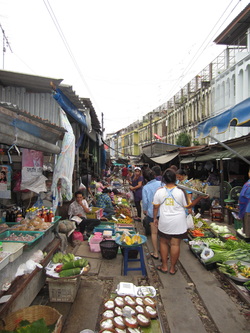
Railway Market
Joe and I like to take a cultural tour of every city we visit, and Bangkok was rich with sites to see and explore. We hired a tour guide, Ms. Pukky (pronounced "pookie"), who was awesome and really knowledgable about the city and surrounding areas (I have her contact info for anyone who wants it!).
Our day started at the Railway Market, which is located about 30 minutes outside of Bangkok. The stalls at the market mainly sell food and the market is huge! The main market area got so crowded, that stall owners started setting up stalls anywhere they could, including right up to the edge of the railroad track. This is how the market got its name. As you can see in the photo to the left, the people here make the most of every square foot.
We walked past stalls selling every food you can imagine, from frogs to crabs and chili peppers to mangos. Some of it looked really good, like the colorful fruits and veggies. Some of it, however, was a little more on the scary side for me. We saw a lot of bloody sea life as people were chopping heads off of fish and different creatures right in front of us. Ms. Pukky stopped to buy some mangosteen and rambutan for us to try. The two types of fruit are really funny looking (I didn't know how to peel and eat them at first), but they were pretty good. Somewhat fleshy with a nice, mild sweet taste.
As we wandered through the market, Ms. Pukky surprised us by telling us that the railroad track there is still in use. Trains use this track four times every day. I couldn't believe this! It amazed me that the shop keepers would set up so close to the tracks, knowing that the trains were coming. We happened to be touring at an opportune time, because a train was on its way through the market. As soon as all the stall owners heard the horns, they started pulling their goods away from the track. Awnings were disassembled and folded and people huddled in little nooks and crannies as they waited for the train to pass. The train came through very slowly (probably so it wouldn't hit anyone), and not even seconds after it passed, the stall owners had started pulling their goods back out near the tracks and setting everything up as if nothing had happened. It was an amusing experience.
Our day started at the Railway Market, which is located about 30 minutes outside of Bangkok. The stalls at the market mainly sell food and the market is huge! The main market area got so crowded, that stall owners started setting up stalls anywhere they could, including right up to the edge of the railroad track. This is how the market got its name. As you can see in the photo to the left, the people here make the most of every square foot.
We walked past stalls selling every food you can imagine, from frogs to crabs and chili peppers to mangos. Some of it looked really good, like the colorful fruits and veggies. Some of it, however, was a little more on the scary side for me. We saw a lot of bloody sea life as people were chopping heads off of fish and different creatures right in front of us. Ms. Pukky stopped to buy some mangosteen and rambutan for us to try. The two types of fruit are really funny looking (I didn't know how to peel and eat them at first), but they were pretty good. Somewhat fleshy with a nice, mild sweet taste.
As we wandered through the market, Ms. Pukky surprised us by telling us that the railroad track there is still in use. Trains use this track four times every day. I couldn't believe this! It amazed me that the shop keepers would set up so close to the tracks, knowing that the trains were coming. We happened to be touring at an opportune time, because a train was on its way through the market. As soon as all the stall owners heard the horns, they started pulling their goods away from the track. Awnings were disassembled and folded and people huddled in little nooks and crannies as they waited for the train to pass. The train came through very slowly (probably so it wouldn't hit anyone), and not even seconds after it passed, the stall owners had started pulling their goods back out near the tracks and setting everything up as if nothing had happened. It was an amusing experience.
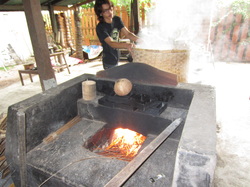
Contraption used to make coconut sugar
Following the market, we made a rest stop at a traditional Thai home. The owner had turned his home into a tourist site by showcasing his work of making things out of coconut. He sells everything from coconut oil and lotions to coconut sugar and water. It's pretty incredible that you can make so many things out of one fruit.
The showcase of his shop was the process for making coconut sugar. He has a big oven-like device right in the middle of the store. Dried palm leaves are used to feed the fire, which is extremely hot. The fire heats a pot of boiling water in which coconut flesh is boiled. This is then cooled to form granulated chunks of sugar. We had a chance to taste the juice that is derived from this process as well as the sugar. Both were tasty.
The Thai house was interesting to explore. While the first floor contained the shop, the second floor had the owner's living quarters. The house was constructed entirely out of a type of really nice wood (which we guessed had to be treated extremely well to survive the humid conditions in Thailand) and was very simple inside. There was a big area that I'm guessing serves as a living room, with a small shrine room off to one corner. On one side of the room there was a slight divide that led to the bedroom, which was little more than a mattress on the floor with a mosquito net. While the home was certainly pretty, I can't imagine that it's very comfortable.
After seeing the house, we walked through the fruit grove on the side of the home. The owner had mangos, bananas, pomelos, and lemongrass growing abundantly. It was neat to see what the trees of some of my favorite fruits look like. I wish I had a mango tree in my backyard! It must be fantastic to go out and pick fresh fruit whenever you want.
One of the highlights of this stop was a friendly dog-like duck. It's funny how we always seem to encounter cute creatures on our tours. The duck greeted us when we arrived, quacking and shaking its tail. It came right up to us and let us pet his feathers. He was just like a puppy!
The showcase of his shop was the process for making coconut sugar. He has a big oven-like device right in the middle of the store. Dried palm leaves are used to feed the fire, which is extremely hot. The fire heats a pot of boiling water in which coconut flesh is boiled. This is then cooled to form granulated chunks of sugar. We had a chance to taste the juice that is derived from this process as well as the sugar. Both were tasty.
The Thai house was interesting to explore. While the first floor contained the shop, the second floor had the owner's living quarters. The house was constructed entirely out of a type of really nice wood (which we guessed had to be treated extremely well to survive the humid conditions in Thailand) and was very simple inside. There was a big area that I'm guessing serves as a living room, with a small shrine room off to one corner. On one side of the room there was a slight divide that led to the bedroom, which was little more than a mattress on the floor with a mosquito net. While the home was certainly pretty, I can't imagine that it's very comfortable.
After seeing the house, we walked through the fruit grove on the side of the home. The owner had mangos, bananas, pomelos, and lemongrass growing abundantly. It was neat to see what the trees of some of my favorite fruits look like. I wish I had a mango tree in my backyard! It must be fantastic to go out and pick fresh fruit whenever you want.
One of the highlights of this stop was a friendly dog-like duck. It's funny how we always seem to encounter cute creatures on our tours. The duck greeted us when we arrived, quacking and shaking its tail. It came right up to us and let us pet his feathers. He was just like a puppy!
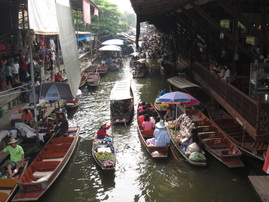
The floating market
After the brief rest stop, we continued our journey to the Damnaoensaduak Canal, home of Bangkok's famous floating market. We got to see two sides of the site - the really touristy market part and the more serene residential area.
I had been warned by online reviews that the market would be overrun by tourists, and the reviewers weren't lying. However, it was a fun experience to explore a floating market by boat. We boarded a very basic wooden rowboat, similar to the ones we rode in at the floating village in Halong Bay, and were rowed around by a strong little old lady.
In the floating market, goods are sold either by boat or through stalls set up around the canal. The boat "stores" make stops along the canal, offering a wide variety of things from fresh fruit to trinkets. Some of the boats even had little stoves on board with which the rowers would stop and cook some fast food, like pad thai, for passers by. This was incredible to see. We made a boat purchase along the way - I got a chance to eat fresh pomelo, one of my new favorite fruits.
After exploring the market, and getting caught in several boat traffic jams, we drifted through the canal to the quieter residential area. The homes along the canal are stationary buildings that are built on poles that are firmly planted into the ground (or at least I hope so!). The people who live along the canal have very modest living conditions, and rely on the boat "stores" to pass by so they can grocery shop for their daily needs. It's a very simple way of life.
I had been warned by online reviews that the market would be overrun by tourists, and the reviewers weren't lying. However, it was a fun experience to explore a floating market by boat. We boarded a very basic wooden rowboat, similar to the ones we rode in at the floating village in Halong Bay, and were rowed around by a strong little old lady.
In the floating market, goods are sold either by boat or through stalls set up around the canal. The boat "stores" make stops along the canal, offering a wide variety of things from fresh fruit to trinkets. Some of the boats even had little stoves on board with which the rowers would stop and cook some fast food, like pad thai, for passers by. This was incredible to see. We made a boat purchase along the way - I got a chance to eat fresh pomelo, one of my new favorite fruits.
After exploring the market, and getting caught in several boat traffic jams, we drifted through the canal to the quieter residential area. The homes along the canal are stationary buildings that are built on poles that are firmly planted into the ground (or at least I hope so!). The people who live along the canal have very modest living conditions, and rely on the boat "stores" to pass by so they can grocery shop for their daily needs. It's a very simple way of life.
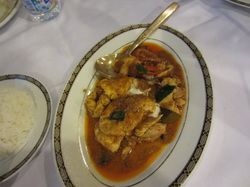
Chicken panang
After the visit to the canal, we made the drive back to Bangkok to visit the many temples of the city. But before this part of our journey started, we took a break for lunch at the Methavalai Sorndaeng Restaurant. The restaurant was very old-school with Victorian decor and staff in what looked like sailor outfits. While we enjoyed a lot of great Thai food, the most notable dish of the day was the chicken panang, a traditional Thai dish I had never heard of before. Ms. Pukky highly recommended this, saying CNN had written a story about the food. It was really good - a slightly sweet red coconut curry that went really well with rice. (Rick, if you're reading this, you must find this dish back in the states!).
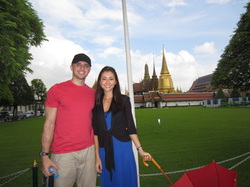
In front of the Grand Palace grounds
Our first stop after lunch was at the Thai Grand Palace, a sprawling complex filled with temples and royal buildings. Before entering the complex, we visited a small museum at the gate that houses the royal family's jewels and heirlooms. Unfortunately, we couldn't take photos in the museum. I would have liked to have shared with you images of the ornate jewelry. From emeralds to rubies and diamonds, the sizes of some of the jewels were incredible!
The entrance to the Grand Palace is filled with numerous temples decorated with gold leaf and shiny glass tiles. Around these temples are countless statues of demons, guardians, and angels. Many of the symbols were similar to those we saw in Cambodia, such as the multi-headed snake and three-headed elephant. Funny enough, the Grand Palace houses a replica of Angkor Wat. It was funny to see the small model since we've seen the real thing!
The Grand Palace houses the famous Emerald Buddha. The statue of Buddha is actually made of jade, but it is called emerald because it's green. We were told that the statue was carted all throughout Thailand due to various wars and conflicts. The Buddha is very tiny and we could only take photos of it from the outside of the building (so I didn't get any great shots). This statues sits at the top of a very high shrine. It has three different outfits made of gold, one for the rainy season, one for summer, and one for winter. Every time the season changes, the Thai king himself visits the Emerald Buddha and changes his clothes.
The entrance to the Grand Palace is filled with numerous temples decorated with gold leaf and shiny glass tiles. Around these temples are countless statues of demons, guardians, and angels. Many of the symbols were similar to those we saw in Cambodia, such as the multi-headed snake and three-headed elephant. Funny enough, the Grand Palace houses a replica of Angkor Wat. It was funny to see the small model since we've seen the real thing!
The Grand Palace houses the famous Emerald Buddha. The statue of Buddha is actually made of jade, but it is called emerald because it's green. We were told that the statue was carted all throughout Thailand due to various wars and conflicts. The Buddha is very tiny and we could only take photos of it from the outside of the building (so I didn't get any great shots). This statues sits at the top of a very high shrine. It has three different outfits made of gold, one for the rainy season, one for summer, and one for winter. Every time the season changes, the Thai king himself visits the Emerald Buddha and changes his clothes.
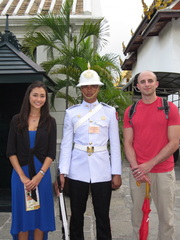
Say cheese!
Part of the Grand Palace grounds is more modern than the many temples and statues, and has a heavy western influence. We were told that several of the buildings were inspired by buildings in London. Many of these buildings are for the royal family's personal use. Because of this, there are royal guards posted by the gates. They are similar to the Buckingham Palace guards as they stand very still and don't move. We, along with other tourists, had fun posing for photos with one of the guards. I would never have the discipline to stand so still for such a long period of time!
While we were in Bangkok, the Thai people were excitedly awaiting the visit of President Obama (he flew into Bangkok the day we left). Ms. Pukky pointed out some of the buildings he would be visiting to meet with the King of Thailand, including the King's special changing house where he and other important people are dressed in traditional Thai garb for special occasions.
While we were in Bangkok, the Thai people were excitedly awaiting the visit of President Obama (he flew into Bangkok the day we left). Ms. Pukky pointed out some of the buildings he would be visiting to meet with the King of Thailand, including the King's special changing house where he and other important people are dressed in traditional Thai garb for special occasions.
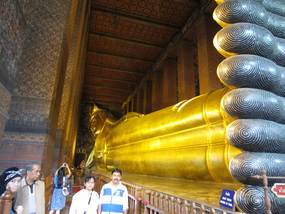
Big Buddha! The reclining Buddha statue
Our sightseeing ended with a visit to Wat Pho, a temple most notably known for its enormous reclining Buddha statue. Huge doesn't even begin to describe how monstrous this statue is. The Buddha is made out of steel and is covered with gold leaf. It's feet are a significant part of the statue, as the soles of his feet have 108 inscriptions related to the Buddhist faith.
After walking around the statue, Joe and I took part in a traditional Thai wish ceremony. Along one side of the reclining Buddha temple, there are metal bell-shaped pots that are lined up single file. We made a donation to the temple to receive about 30 small coins. We walked along the wall of pots, depositing a coin into each one as we made a wish. It was a lot of wish making for one day, and I wished for the same thing the entire way, so I hope my wish comes true!
Wat Pho is also known as a massage and meditation school for Buddhist monks. The practice of the Thai massage is a very old tradition, one that is highly respected. Around Wat Pho, we saw tablets of the human body with lines depicting different parts of the body. We learned that these are used during anatomy lessons to learn about pressure points and things related to massages.
At the end of our Wat Pho tour, we stepped into another main temple with a very ornate, gold buddha statue and shrine. We sat quietly and watched Buddhist visitors praying to the statue as Ms. Pukky quietly explained a little about the Buddhist faith. It was a peaceful way to end a very busy day of touring!
After walking around the statue, Joe and I took part in a traditional Thai wish ceremony. Along one side of the reclining Buddha temple, there are metal bell-shaped pots that are lined up single file. We made a donation to the temple to receive about 30 small coins. We walked along the wall of pots, depositing a coin into each one as we made a wish. It was a lot of wish making for one day, and I wished for the same thing the entire way, so I hope my wish comes true!
Wat Pho is also known as a massage and meditation school for Buddhist monks. The practice of the Thai massage is a very old tradition, one that is highly respected. Around Wat Pho, we saw tablets of the human body with lines depicting different parts of the body. We learned that these are used during anatomy lessons to learn about pressure points and things related to massages.
At the end of our Wat Pho tour, we stepped into another main temple with a very ornate, gold buddha statue and shrine. We sat quietly and watched Buddhist visitors praying to the statue as Ms. Pukky quietly explained a little about the Buddhist faith. It was a peaceful way to end a very busy day of touring!

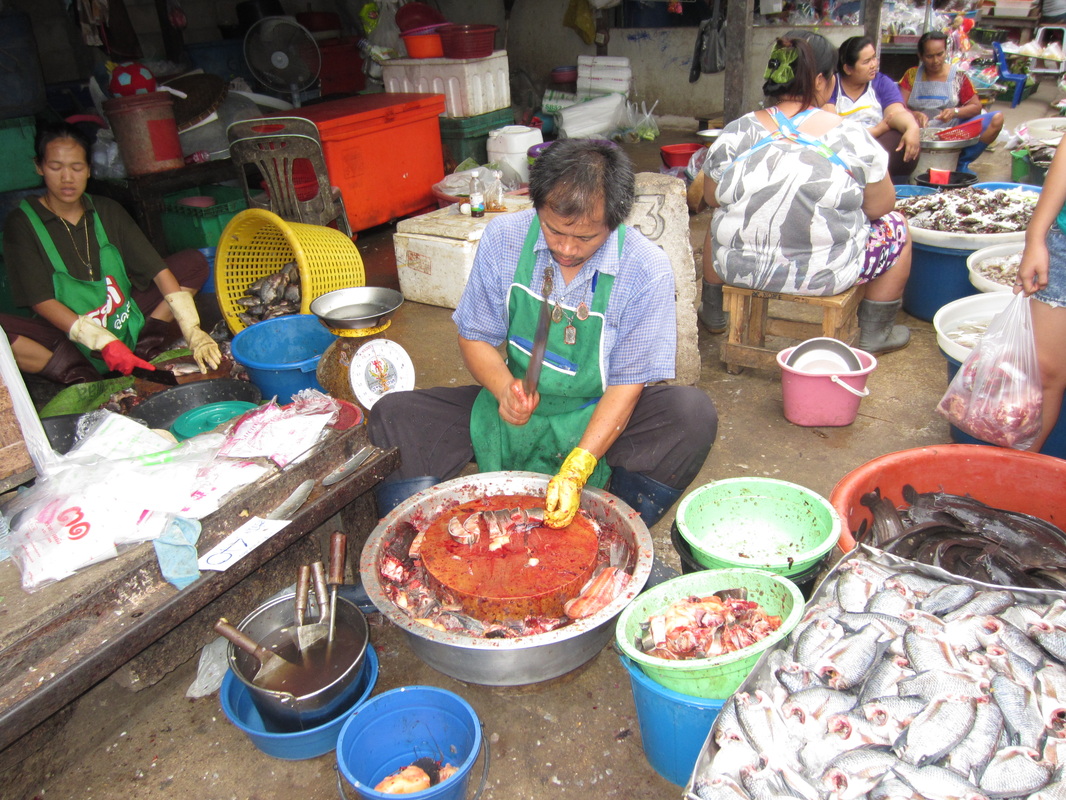
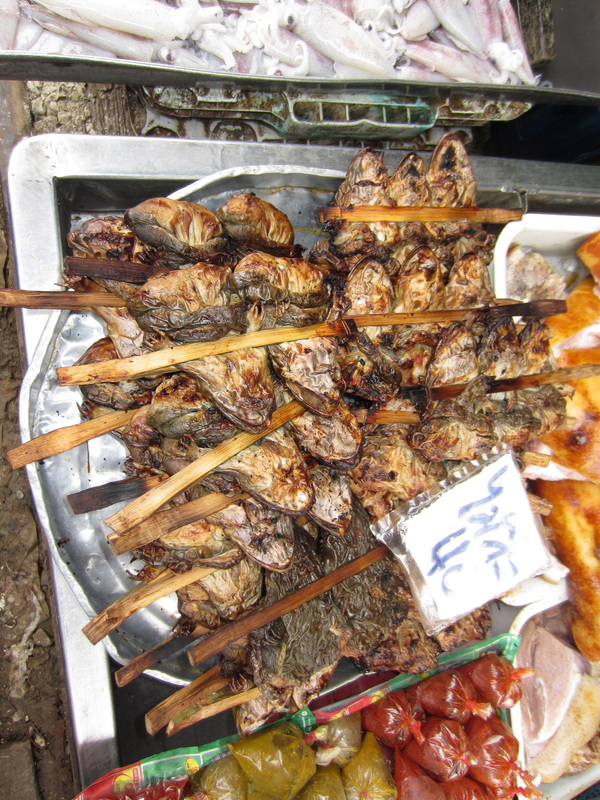
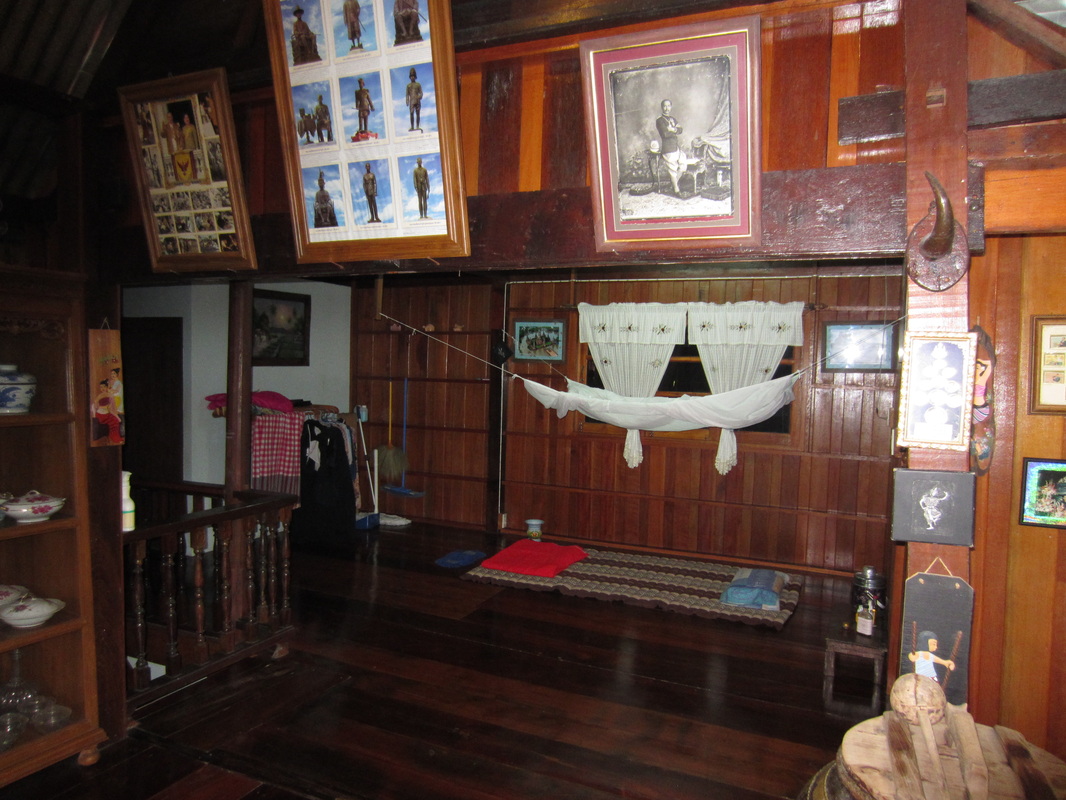
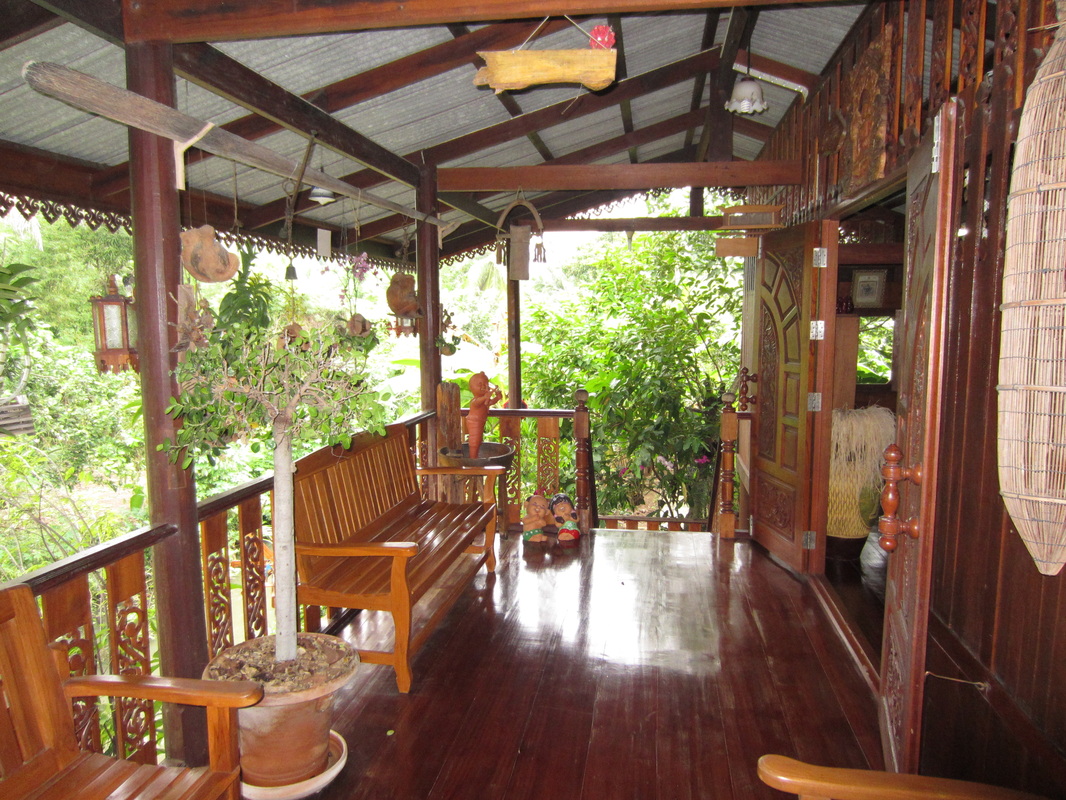
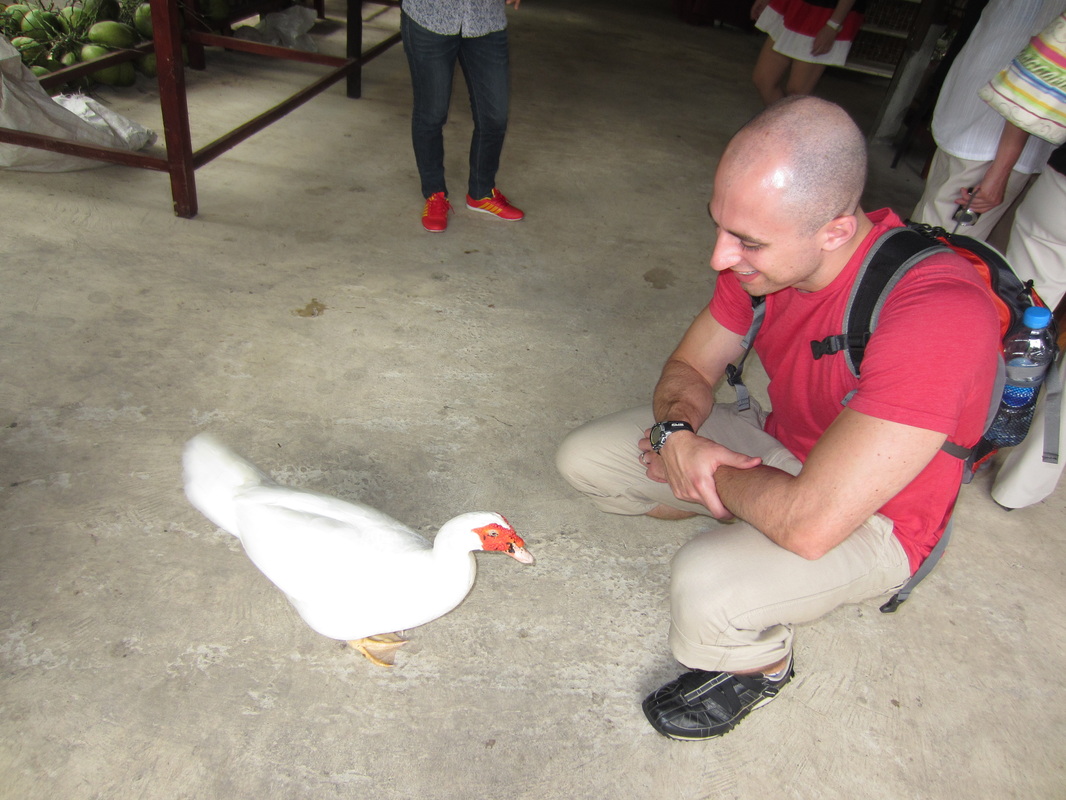
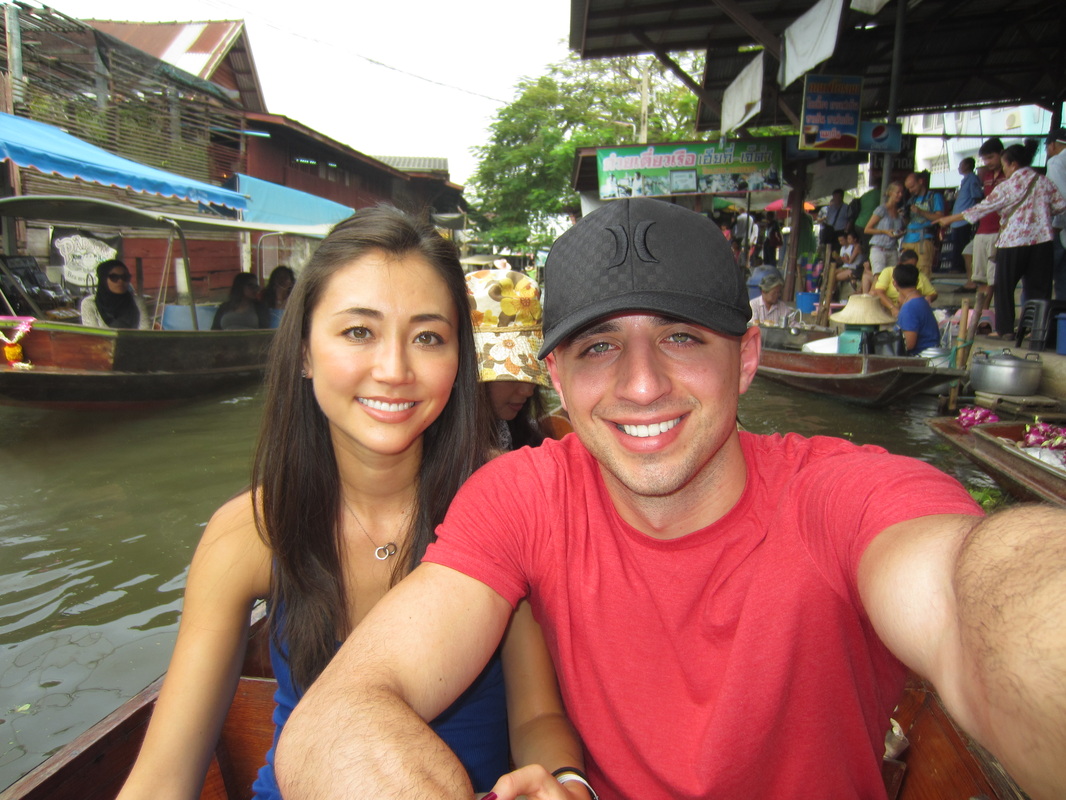
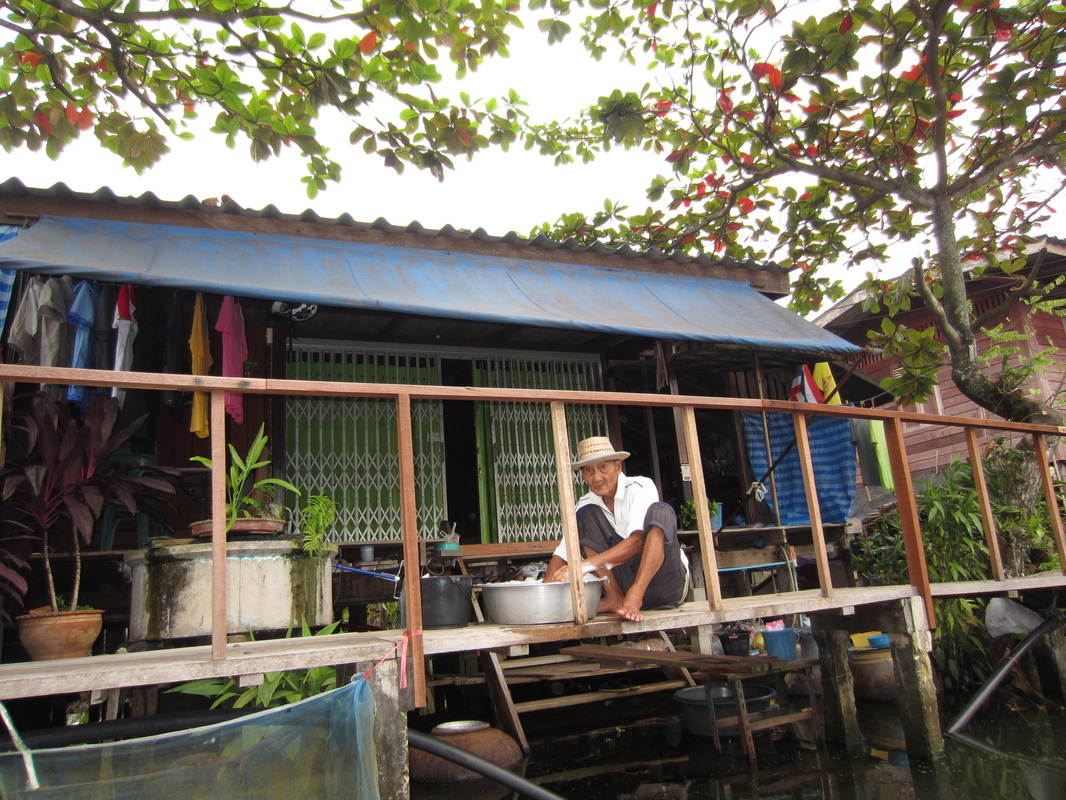
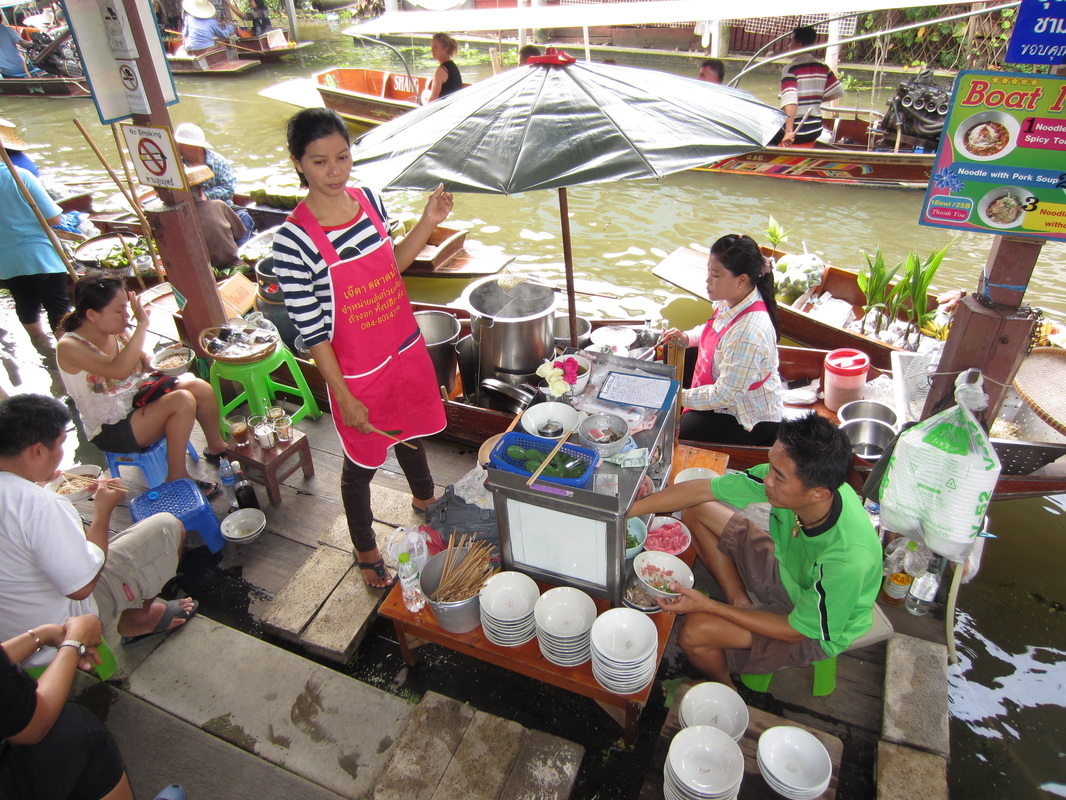
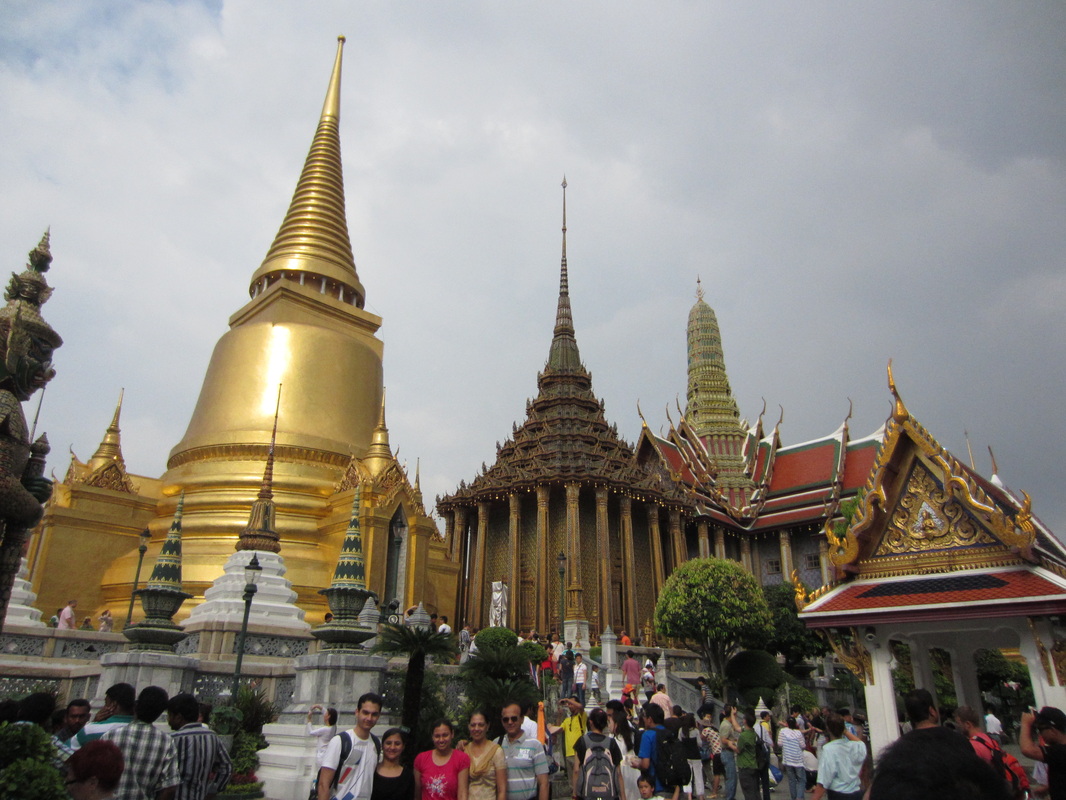
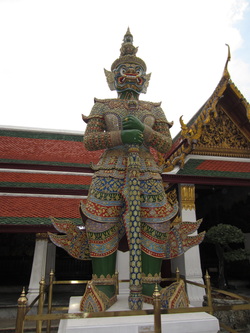
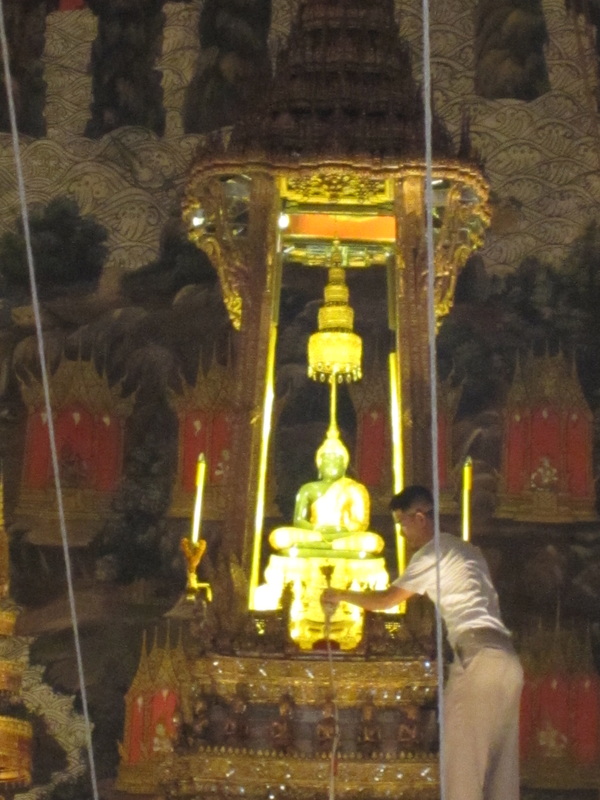
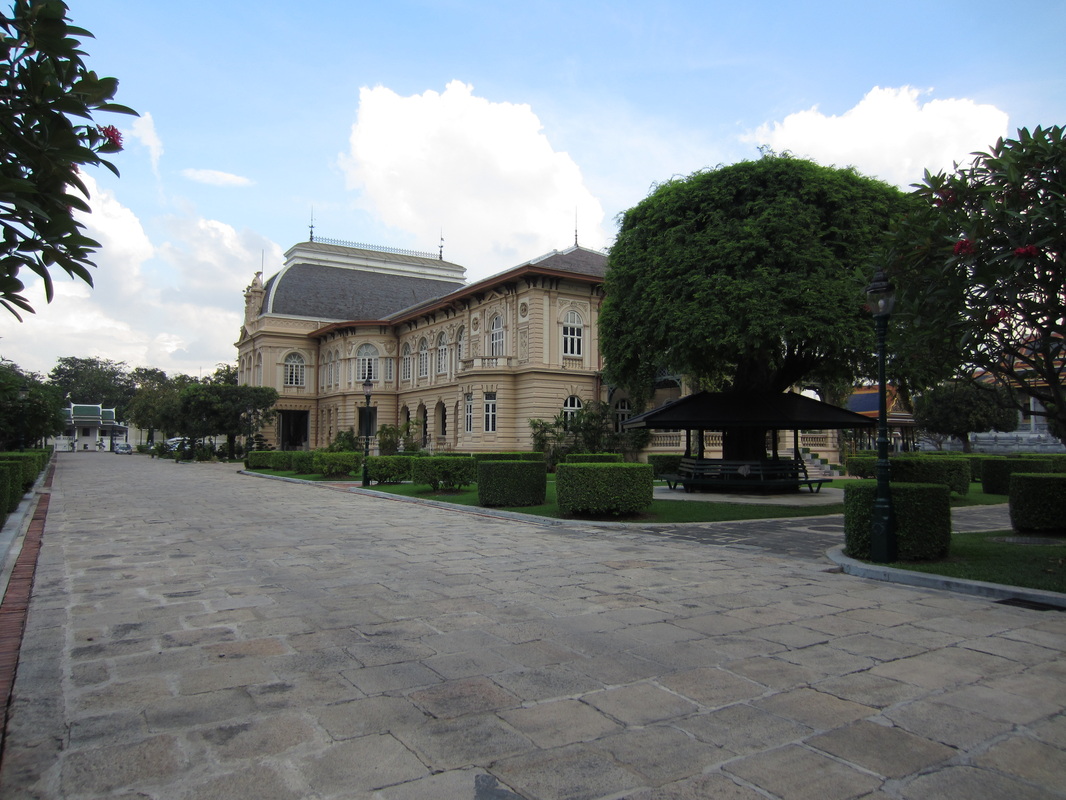
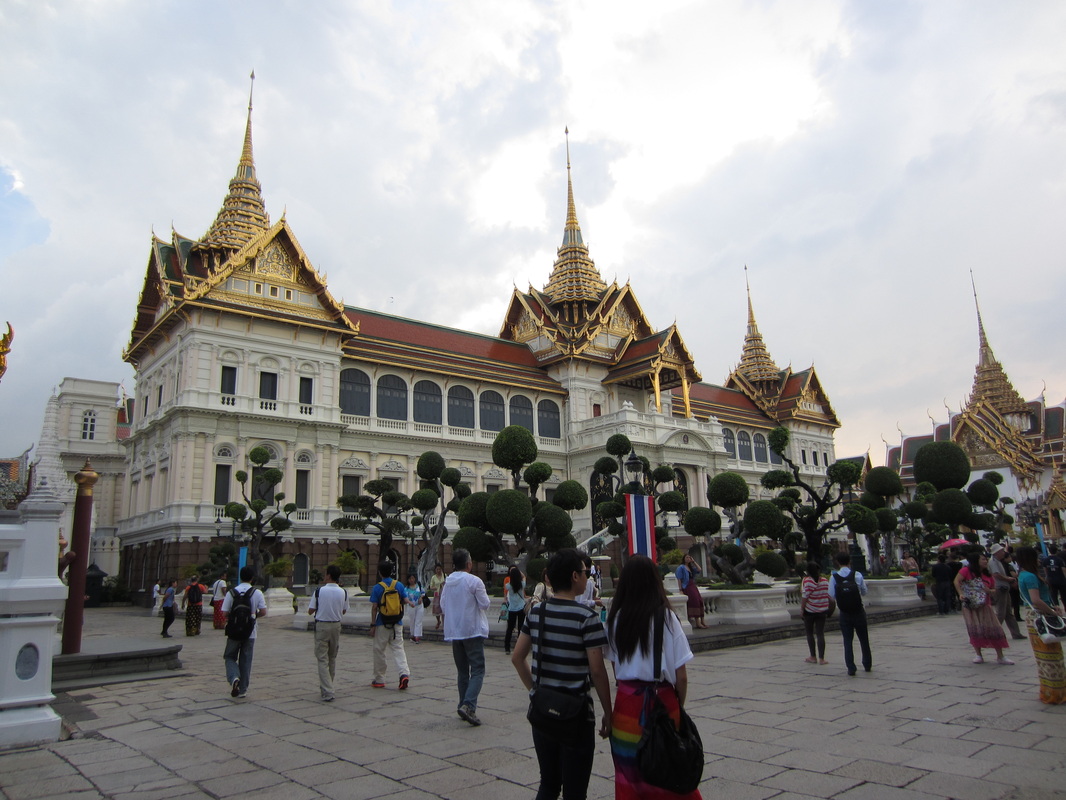

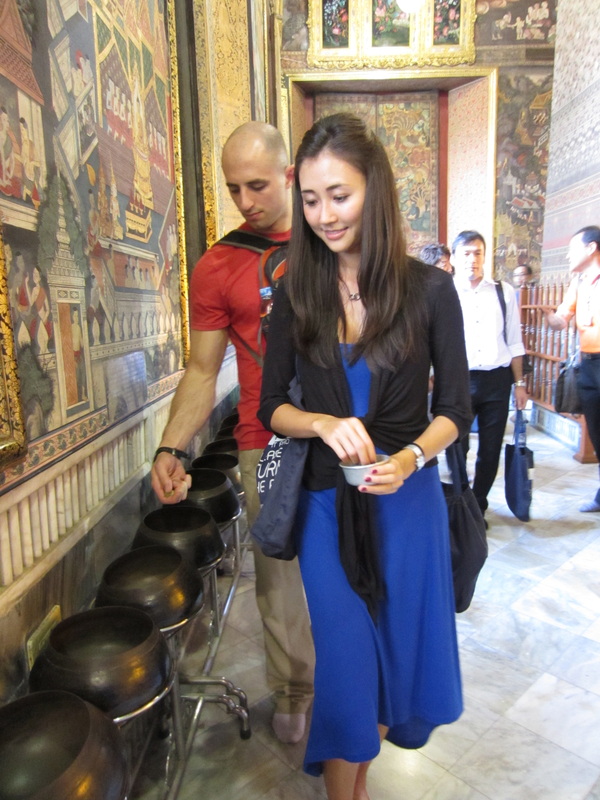
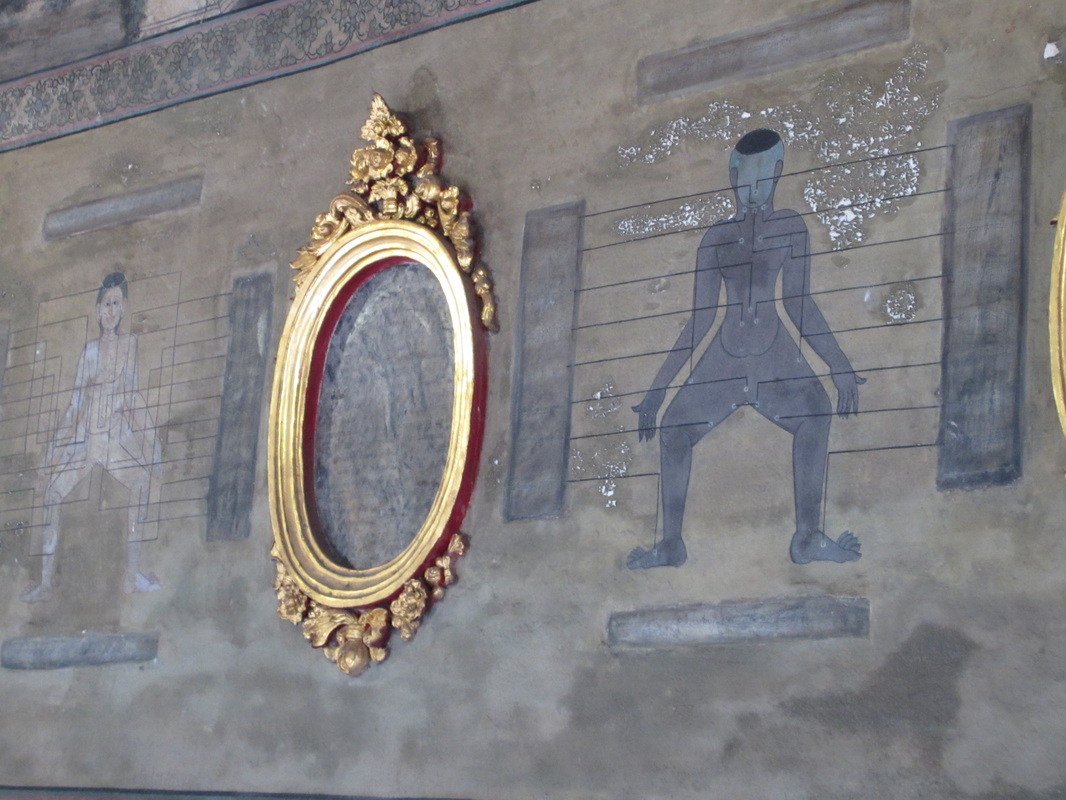
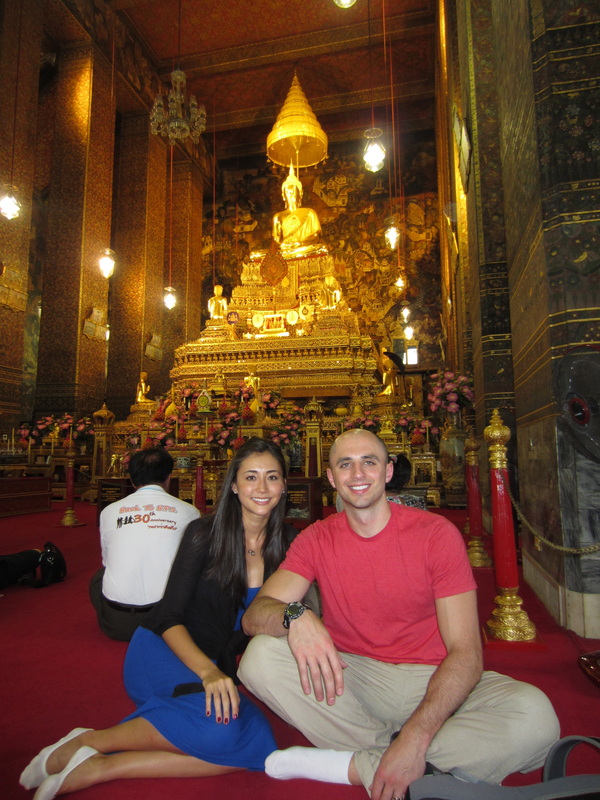
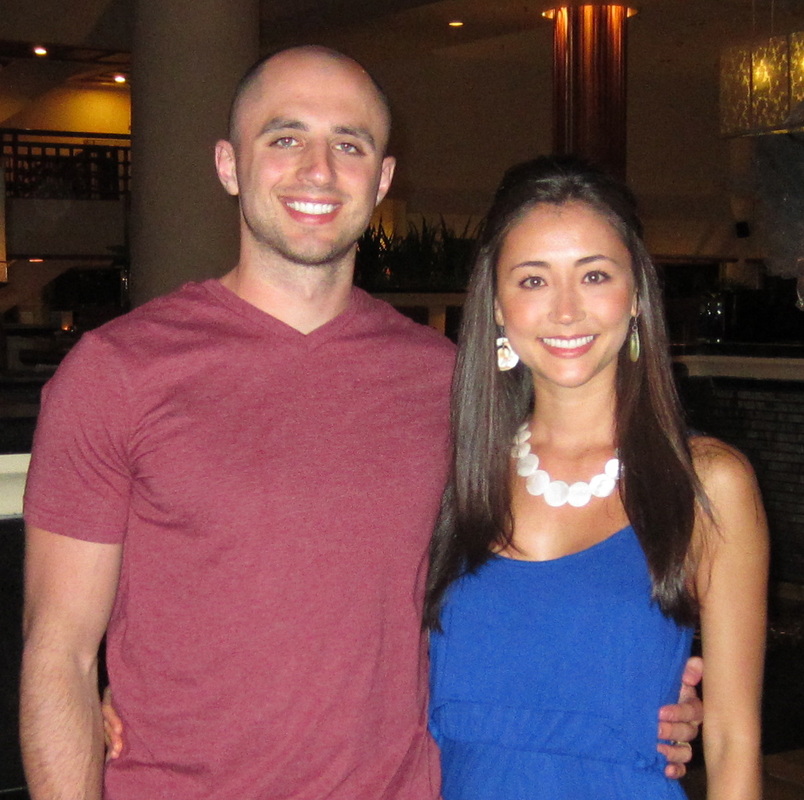
 RSS Feed
RSS Feed